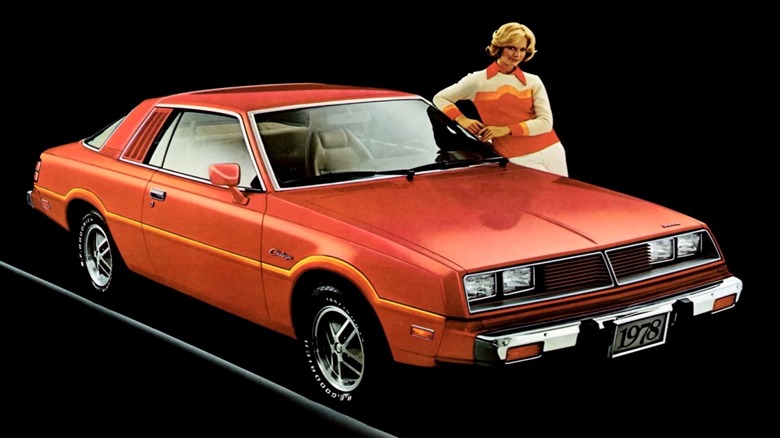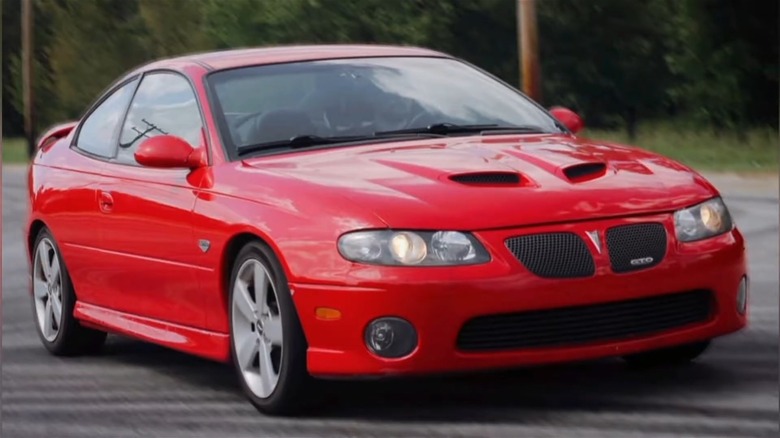What Is Badge Engineering And How Did It Lead To Some Of The Best And Worst Cars?
There are several competing automakers that end up designing models that look similar, but what about ones that appear identical? Sometimes, in an effort to save money, one car company might simply rebrand another manufacturer's vehicle, and just change the name. This is referred to as badge engineering, and is done between brands under the same parent company or through deals with other auto industry giants.
The practice of badge engineering has received mixed reception over the years, with some good outcomes and some truly awful ones. A notorious example of badge engineering is the 1978 Challenger, which is just a rebranded Mitsubishi Galant. Its hard to believe this late 70s clunky-rebrand iteration shares the same moniker as the 1970 Challenger 'Black Ghost'. On the plus side, rebranding an existing vehicle can save substantially on production overhead. However, automotive enthusiasts seem to have a keen sense in identifying a true successor to a beloved model versus a name-swapped interloper. Of course, once the truth of badge engineering is discovered, sales can plummet as word gets out because the move can appear misleading. Sometimes though, an automaker can get away with the ruse, as evidenced by these cars you probably didn't realize were rebadged models.
A European Honda Accord becomes an Acura TSX
Japanese automaker Honda has experienced significant success with its Accord model selling over 300,000 units per year in the US eleven times over the past two decades. The Accord released in the US in the late 2000s wasn't the same model that Europe received. The Honda sedan across the pond featured a smaller size, tighter handling, and was marketed toward a more youthful demographic. While some countries like Australia received both Accord models to choose from, Honda went another route with Americans.
Acura, the luxury Honda brand, simply took the European version of the Accord, and changed the name to the TSX. Reviews on the 2009 Acura TSX were glowing with examples from Car and Driver who stated, "A fantastic, fun-to-drive car overall" and Edmunds who praised it's "Immense features list, [and] sporty handling." The TSX is a good example of badge engineering, as even though it was originally branded a Honda Accord in Europe, it's a model the US might not have experienced otherwise.
An Aussie import becomes a GTO
While you can't fault companies for trying to capitalize on emerging trends, sometimes a rush to release a product can be a hasty mistake. In what was dubbed by many "the Blunder from Down Under," Bob Lutz with GM saw an opportunity to reintroduce a classic muscle car in the mid-2000s. Suddenly, more horsepower and larger performance engines were back in fashion among the US public, so a reemergence of the GTO had to be a hit, right? Well, the new GTO might have been a smash success, had it been handled differently.
GM wanted to take advantage of the moment, but didn't have a foundation to build the GTO after discontinuing the Firebird and Camaro. Development of a new vehicle from the ground up is time consuming and expensive, so Lutz came up with an idea. The automaker's division in Australia were already churning out a car called the Holden Monaro, which was based off classic muscle cars of the region. Why not import the Aussie car, slap a GTO badge on it, and sell it as the return of the American muscle car? As carmagazine.co.uk put it, "That fooled no-one, especially diehard GTO lovers. Sales sucked." The last generation GTO wasn't the triumphant return to the muscle era anyone wanted and was only produced for three years before being discontinued.


